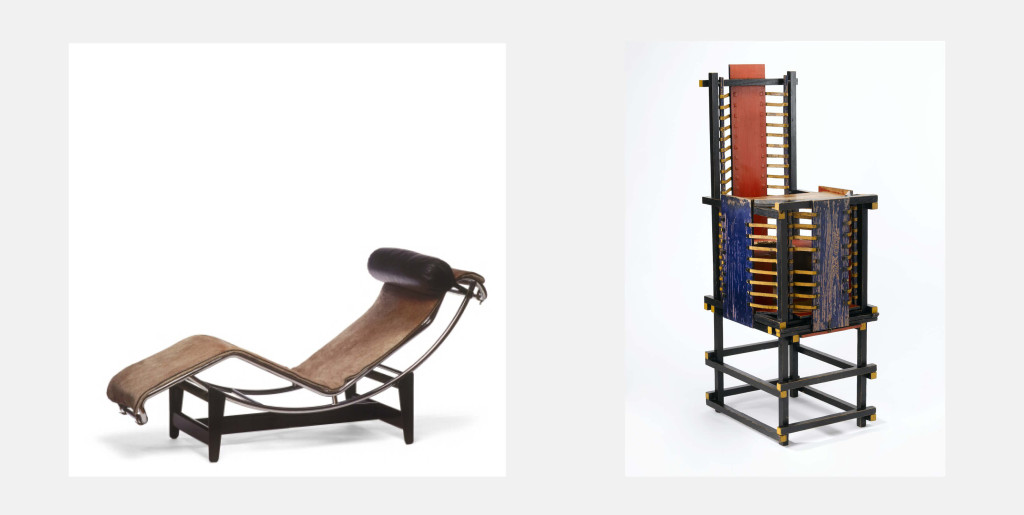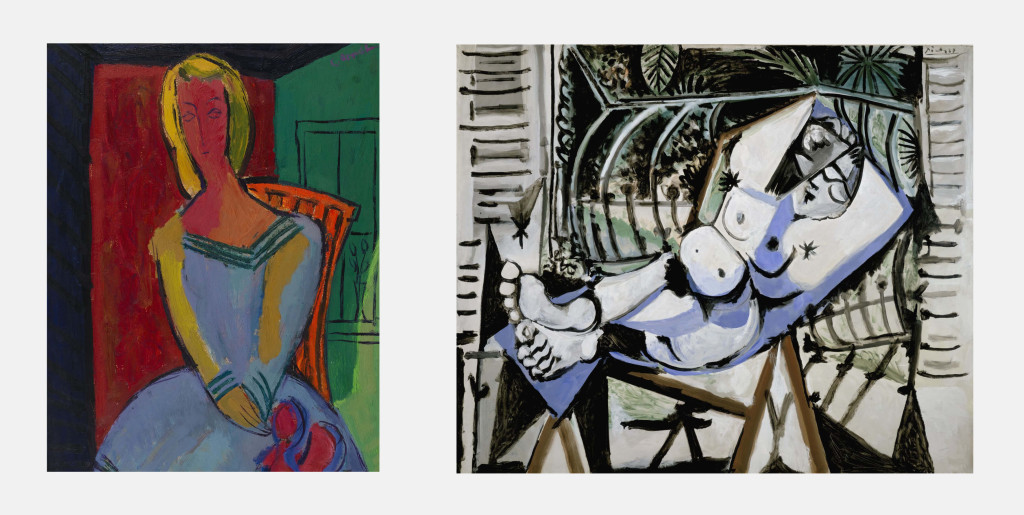Final part of Stedelijk’s new collection presentation
Yesterday Today - Collection until 1950
News — Aug 2, 2022
Like the previous two parts, Yesterday Today shows that art and design are closely linked to social developments. This presentation pays extra attention to female makers and mediators, and there is a strong audio-visual element.
Social developments
Yesterday Today shows how art and design are closely linked to social developments. The rise of industrialization, the modern city and nightlife are subjects in works by such artists as Marc Chagall, Jan Ouwersloot, Jan Sluijters, Charley Toorop and Betsy Westendorp-Osieck. Meanwhile, providing stark contrast, poverty and ideologies leading to war and resistance can be seen in the works of artists such as Max Ernst, George Grosz, Willem Sandberg and Emmy Andriesse – as well as in infographics, some of which represent the first attempts at influencing the masses.
The relationship between modernism and colonialism is examined, such as Jan Toorop's relationship to his native country, present-day Indonesia, the image of Indonesia in art and design and the appropriation of the batik technique by European designers. In addition, attention is paid to the anti-colonial struggle, which started much earlier than the 1940s, as witnessed by posters showing the connection between industrialization and colonization and the photo Piet Zwart made in 1933 of the Surinamese anti-colonial writer Anton de Kom.

Women in art
Throughout the exhibition, special focus is given to female collectors, curators, critics and others. For instance, with her bequest, Sophia Adriana Lopez Suasso-de Bruijn laid the foundation for the Stedelijk Museum. The presentation also represents the first visible result of the research project The Other Half: Women’s Contribution to the Dutch Art World, 1780-1980, a collaboration between the Stedelijk Museum, RKD, Rijksmuseum, Museum Boijmans van Beuningen and the University of Amsterdam. Many works by female makers are also shown: despite the fact their work makes up less than ten percent of the collection, half of the works in this presentation come from females. These works include highlights from the ‘Joffers’ – artists from the interwar period that included Charley Toorop, Else Berg, Nola Hatterman and Anneke van der Feer. Also featured are women designers of the Amsterdam School and international functionalism, including designers Margaret Kropholler and Charlotte Perriand, who were among the first women in their field. Women from the Bauhaus are also discussed, but then with the critical comment that they were mainly ‘relegated’ to the weaving workshop.

Past themes that still resonate
As the title suggests, Yesterday Today offers a contemporary look at the collection. Moreover, many themes from the past turn out to be surprisingly topical and in line with contemporary debates – including the contribution of female makers; the dark sides of capitalism, such as poverty, inequality, class society and colonialism; and the Eurocentric view, which only tells part of the story. Issues such as engagement, ideologies, dictatorship, war and resistance, migration and diaspora are equally related to our time.

“When I took this job, I said it was important for me to work with the entire curatorial team in broadening the collection. The result is this new collection presentation. We started with the realization that art history is ultimately a collection of different histories and stories. And even with the full new presentation now being open, the collection presentation will continue to change – like history, it will stay in motion.”
Yesterday Today features the works of:
Aino Aalto, Alvar Aalto, Ragnhild d' Ailly, August Allebé, Peter Alma, Emmy Andriesse, Lizzy Ansingh, Karel Appel, Gerd Arntz, Maria Austria, Jan Baanders Sr., Tine Baanders, Baharoedin, Guido Balsamo Stella, Marius Bauer, Max Beckmann, Chris Beekman, Else Berg, Ella Bergmann-Michel, Eva Besnyö, Jeanne Bieruma Oosting, Roger André Bissière, Carel Blazer, Lucienne Bloch, Erwin Blumenfeld, Anna Boch, Louis Bogtman, Eugène Brands, Marianne Brandt, Georges Braque, Charles Breijer, George Hendrik Breitner, Marcel Breuer, Anne Brigman, Hans Brockhage, Nico Broekman, Alexander Calder, Heinrich Campendonk, Agnes Canta, Fred Carasso, Henri Cartier-Bresson, Paul Cézanne, Marc Chagall, Paul Citroen, Fré Cohen, Theo Colenbrander, Constant, A.D. Copier, Corneille, Gustave De Smet, Robert Delaunay, Agoes Djaya, Otto Djaya, Theo van Doesburg, Cesar Domela, Kees van Dongen, Harm van den Dorpel, Wilhelmina Cornelia Drupsteen, Charles Dufresne, Charles & Ray Eames, James Ensor, Max Ernst, Ida Falkenberg-Liefrinck, Anneke van der Feer, Suze Fokker, Gisèle Freund, G. R. Walter, Lotti van der Gaag, Leo Gestel, Alberto Giacometti, Leon Gischia, Willem Hendrik Gispen, Vincent van Gogh, Natalia Sergeevna Goncharova, Julio González, George Grosz, Elena Genrikhovna Guro, Jindrich Halabala, Lea H. Halpern, Nola Hatterman, Erich Heckel, Jacoba van Heemskerck, Hannah Höch, Frieda Hunziker, Vilmos Huszár, Raoul Hynckes, Isaac Israëls, Egill Jacobsen, Alexej von Jawlensky, Johan Barthold Jongkind, Gertrude Käsebier, Pat Keely, Ernst Ludwig Kirchner, Paul Klee, Michel de Klerk, Josina Knap, Oskar Kokoschka, Käthe Kollwitz, Boris Kowadlo, Hildo Krop, Margaret Kropholler, Harry van Kruiningen, Valentina Nikifirovna Kulagina, Rie Kuyken, Le Corbusier, Chris Lebeau, Bart van der Leck, Carel Adolph Lion Cachet, Kazimir Malevich, Alfred Manessier, Henri Matisse, Mikhail Matyushin, Hendrik Willem Mesdag, Harmen Meurs, Kitty van der Mijll Dekker, Jean-François Millet, Wally Moes, Lucia Moholy, László Moholy-Nagy, Piet Mondriaan, Marlow Moss, Wim Oepts, Helly Oestreicher, Lisbeth Oestreicher, Cas Oorthuys, Piet Ouborg, Jan Ouwersloot, Jules Pascin, Charlotte Perriand, Trude Petri, Pablo Picasso, Willem van de Poll, Jackson Pollock, John Rädecker, Gerrit Rietveld, Coba Ritsema, Diego Rivera, Hajo Rose, Olga Vladimirovna Rozanova, Dolly Rudeman, Erich Salomon, Willem Sandberg, Carlo Scarpa, Oskar Schlemmer, Karl Schmidt-Rottluff, Bernardine Schregel, Wim Schuhmacher, Paul Schuitema, Michiel Schuurman, Thérèse Schwartze, Kurt Schwitters, Gino Severini, Susi Singer, Annie Sipkema, Jan Sluijters, Jan Frederik Staal, Mart Stam, Jacoba Surie, Krijn Taconis, Charley Toorop, Jan Toorop, René Tosari, Otto Treumann, Frits Van den Berghe, Stam & Beese Van Tijen, Sesostris Vitullo, Friedrich Vordemberge-Gildewart, Nicolaas Warb, Betsy Westendorp-Osieck, Jan Wiegers, Matthieu Wiegman, Franz Wildenhain, Marguerite Wildenhain-Friedlaender, Ad Windig, Ossip Zadkine, Piet Zwart.
The presentations are in the historic building and there will be regular changes.


CREDITS
Note for editors:
For more information and images, please contact the Stedelijk Museum’s press office at: pressoffice@stedelijk.nl


